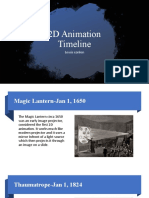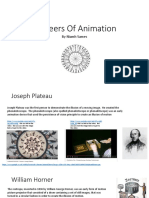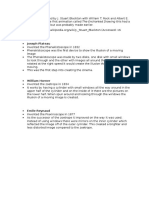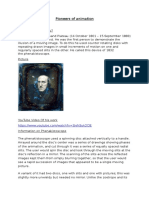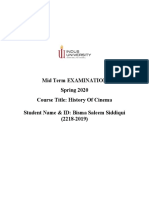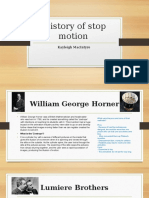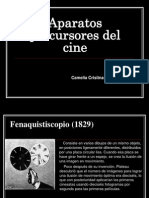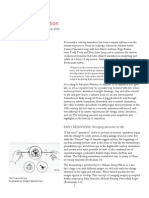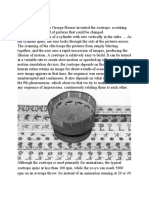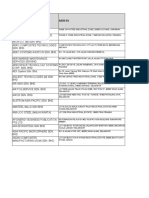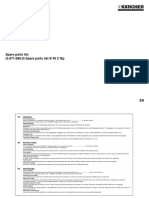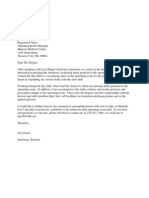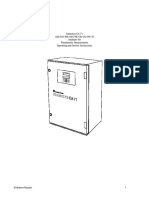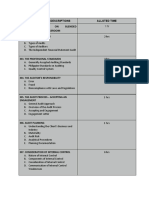0% found this document useful (0 votes)
73 views6 pagesDDA 0101 - Week 2 Notes
The document introduces early animation devices, starting with the thaumatrope in 1825, which created the illusion of a combined image when spun. It continues with the phenakistoscope (1833), zoetrope (1865), flip book (1868), and praxinoscope (1877), detailing their mechanisms and historical significance. A student activity is suggested to further explore these devices through a video clip.
Uploaded by
arthurwanyagah01Copyright
© © All Rights Reserved
We take content rights seriously. If you suspect this is your content, claim it here.
Available Formats
Download as PDF, TXT or read online on Scribd
0% found this document useful (0 votes)
73 views6 pagesDDA 0101 - Week 2 Notes
The document introduces early animation devices, starting with the thaumatrope in 1825, which created the illusion of a combined image when spun. It continues with the phenakistoscope (1833), zoetrope (1865), flip book (1868), and praxinoscope (1877), detailing their mechanisms and historical significance. A student activity is suggested to further explore these devices through a video clip.
Uploaded by
arthurwanyagah01Copyright
© © All Rights Reserved
We take content rights seriously. If you suspect this is your content, claim it here.
Available Formats
Download as PDF, TXT or read online on Scribd
/ 6

